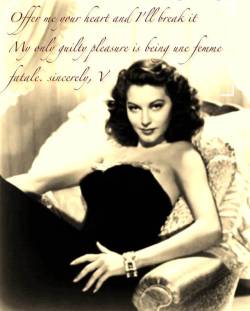Lebanese Women and Film
3,926 viewsThe history of Lebanese cinema remains a vast research subject as not all elements of its evolution are brought to light. The part played by Lebanese women in the evolution of this art is sometimes downplayed and sometimes not mentioned at all. It is only in the past five years that we have seen the press and the media focus on present day women’s contribution to film. The truth is that Lebanese women have been active since day one and have contributed, in more than one field, to bring film to life.
One of the first Lebanese documentary filmmakers might very well be a woman. When searching through the archives of the French Department of Foreign Affairs, I stumbled upon a page in “La Revue du Liban et de l’Orient Méditerranéen” magazine dating from 1934 with the title: Le cinema… Un Documentaire: Versailles

Eliane Tayar
Next to the article was the photo of a distinguished woman and its caption read: “Eliane Tayar, metteur en scene.” The name caught my eye and so did the photo.
The article described the documentary co-directed by Eliane Tayar and Maurice Cloche, as being wonderful, and its cinematography as well as the musical partitions by Michel Levine as very original.
It did not speak much of the aesthetics of the film nor did it dwell on the directing abilities of Ms. Tayar further than the couple of lines describing the movie and its altogether beauty. However, the article describes Ms. Tayar as a “typical Arabian beauty and somewhat a compatriot whose allure is reminiscent of the Arabian Nights.”
It’s a pity that the information concerning Ms. Tayar did not revolve around her directing abilities or her artistic flare but more around her looks and stereotyped physical traits with a pinch of orientalism. The article put in its 1934 context, shows the “exotic” lens through which the French society viewed the countries under its mandate, not to mention the shallow approach with which artistic talent is linked to external beauty and charm.
The films made in Lebanon during the 1930s were fictional films by directors such as Jiordano Pidutti (an Italian settled in Lebanon), whose first film, “The Adventures of Elias Mabrouk”, came out in 1932. There is no proof of documentaries produced around this period, thus making Eliane Tayar the first name on the list.
Around the same period, in 1933, Herta Gargour, created her own studio “Lumnar Film” in her own home, thus becoming the first female producer to cooperate on the first Lebanese talking feature length film, entitled “Sous les Ruines de Baalbeck” and subtitled in French. This film was also the first film that was entirely produced in an Arab country. Egyptian films were still being sent to laboratories abroad.
We can clearly say that these two figures are an essential stepping stone in the evolution of the film industry in Lebanon. It goes without saying that Eliane Tayar is never mentioned and as for Herta Gargour, it is rare to find her work in Lebanese cinema mentioned thoroughly.
To this day, women behind the camera or involved in the production of Lebanese cinema have been essential to the evolution of the seventh art in our country. Names such as Randa Chahal-Sabbagh, Danielle Arbid, Nadine Labaki, Layla Assaf, Joanna Hadjithomas have come up with essential creations and the new generation to follow looks more than promising and we will be here to write about them.





Leave a Reply